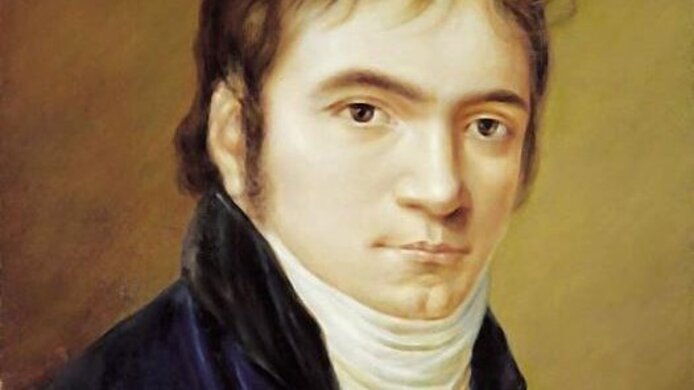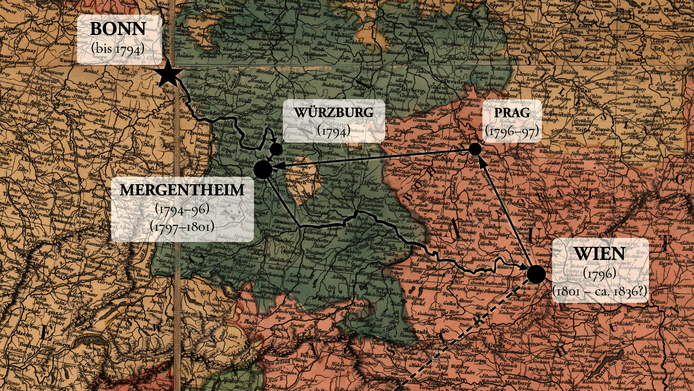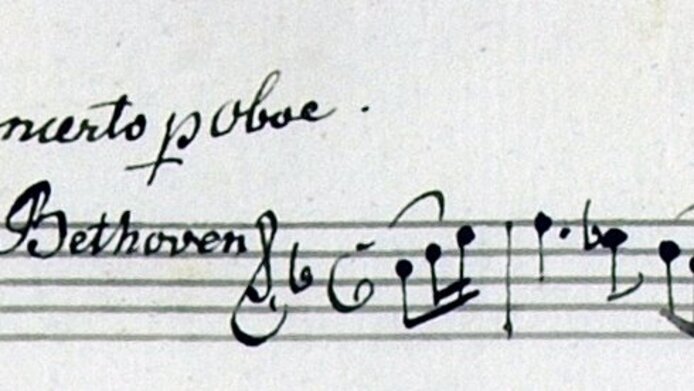Young Beethoven in a new light

Serious and sombre are two fitting epithets to describe Ludwig van Beethoven’s cantata on the death of Emperor Joseph II (1741-1790). The composer—then 20 years old—found a special way to fulfil this important commission. “The extraordinary expressivity of that piece was unusual for the music of that time. Beethoven set great store by originality, and he was not content simply to produce a cantata in the old mould,” explains John David Wilson, a musicologist at the Austrian Academy of Sciences. In 1790, Beethoven had already spent six years in his native town of Bonn as assistant organist in the court chapel of the Archbishop and Elector of Cologne Maximilian Franz of Austria (1751-1804). Both his striving for originality and his curiosity and courage to venture down new routes became noticeable early on: his first three piano sonatas, which he wrote at the age of 12, are “wonderful works and, above all, highly original”, Wilson adds. This early work also was to play a decisive role for his further trajectory.
Bonn music collection—a small miracle
At the age of 12, Beethoven was already working as assistant court organist for Christian Gottlob Neefe—albeit without receiving payment. While it was known that Neefe supported Beethoven in his work, the exact nature of this support was not clear: it was only the scholarly analysis of Maximilian Franz's music collection, which comprises more than 3,500 volumes, at the Biblioteca Estense Universitaria di Modena in northern Italy that brought to light important details on this and other aspects. For instance, Neefe was demonstrably involved in ensuring the dissemination of the three piano sonatas between 1782 and 1784. His contacts with publishers and his skilful solicitation of patrons helped Beethoven obtain his first paid employment at the Bonn court. Research into the collection was carried out in stages, starting with the operas and followed by sacred music. The work was undertaken in the context of two already completed and one ongoing research project funded by the Austrian Science Fund FWF.
The three-strong research team—John David Wilson, Birgit Lodes and Elisabeth Reisinger from the University of Vienna—engaged in a systematic and complete study of the Bonn collection and also made painstaking efforts to identify the sources: the individual items were not clearly marked as belonging to the collection but were distributed among the other library holdings. The only catalogue on the subject also lacked information on the scope and size of the sources, which made the team’s work even more difficult. On the plus side, 85% of the sacred music and about 50% of the operas have been preserved. This is a small miracle: to keep it safe from French troops, the Bonn collection was taken to Modena via a roundabout route in 1794. It was one of the largest collections of the time and, unlike the Duchess Anna Amalie Library in Weimar, was designed for general use, a fact that has now been verified by the present research team.
Sacred music—an important part of education
“We came across a historical checkout slip—made out to Ludwig van Beethoven,” reports Birgit Lodes, a musicologist and Beethoven expert. As the research results show, the music library was not only distinguished by its scope, but also by its wide musical range, high quality and international nature. It comes as a surprise that Beethoven is the only court musician whose work was included in the library. “Maximilian Franz had very high quality standards and probably underestimated his own court musicians. But Beethoven’s work received all the more attention,” notes Wilson. Beethoven also benefited from the educational policy reforms undertaken by the Elector: opera, theatre and church were mainstays of the enlightened educational programme, and Beethoven was also enrolled in the first university in Bonn, which had been founded by the Elector.
As a court organist, who had been in contact with outstanding musicians from his childhood, Beethoven’s time in Bonn made him familiar with a highly varied musical repertoire, both actively and passively. “As we now know, musical life at the Elector’s court was geared to high quality, international influences and the latest achievements in music. This strongly influenced Beethoven and can no longer be ignored,” explains Lodes.
Bonn’s diversity left a mark
For the first time, the researchers from Vienna have now identified in great detail the enormous variety that distinguished Beethoven’s repertoire. They were also able to put a precise date on many of his early works. The annually published court calendars were central to establishing when Beethoven played which piece as a court organist. The calendars list all church holidays on which major compositions were performed. “We painstakingly scrutinised the individual music items. When were they used, when were they amended? Were voices added to a piece, for example, and did this occur during Beethoven's time in Bonn? If so, we can be sure that he played it on the organ,” explains the researcher. Wilson found out, for instance, which masses the young Beethoven participated in: one of them was certainly Joseph Haydn's famous “Great Organ Mass”. But it also included Bohemian Christmas music, whose pastoral notes are echoed in Beethoven's Symphony no. 6, the "Pastoral Symphony". Incidentally, the key to determining the date of Beethoven's early compositions can be found in the type of paper used. The researchers learned to recognise the individual copyists and the period in which a certain type of paper was used at court. A close scrutiny of the paper on which Beethoven wrote his compositions even enabled John Wilson to re-date some of them.
Communicative, with a talent for improvisation
Beethoven thus spent roughly a third of the time of his musical practice in Bonn primarily as a church musician. Although he would only compose two masses in the course of his life, numerous sketches and designs for sacred music have been preserved from his time in Bonn and Vienna. Although he never completed them, because other genres enjoyed greater popularity at the time, sacred music still made a lasting impact on him. Moreover, he never entirely forgot the idea of becoming a court conductor like his grandfather: after all, he had experienced for many years in Bonn how beneficial working in a regular orchestra can be—a regime he had found agreeable and valuable. In view of his immediate environment—marked strongly by intellectual discourse, creative influences from all over Europe and even aspects of social criticism—the most recent conclusion, that the young Beethoven was very sociable and communicative and constantly tried out new things, is probably very close to the truth. “It is intriguing to note that his organ-playing duties were particularly conducive to his creativity,” says Lodes, “because he learned to improvise. This improviser’s attitude and the element of surprise continue to constitute substantial qualities of his music”—regardless of whether we are talking about a piano sonata, a symphony, or a cantata.
Personal details Birgit Lodes is an internationally renowned music historian who has been exploring Ludwig van Beethoven’s oeuvre since the mid-1990s. A native of Bayreuth, she passed through several stages in her career before arriving at the University of Vienna’s Department of Musicology, which she also headed for several years. She is active in a variety of professional functions and has received multiple awards. John David Wilson is a musicologist whose research focus lies on the topos and tones of Beethoven’s time. The native Texan is also a pianist, and his doctorate provided the basis for FWF-funded projects on the library of opera and sacred music. He is currently working on a biography of young Beethoven, for which he also receives funding from the FWF.
Publications







